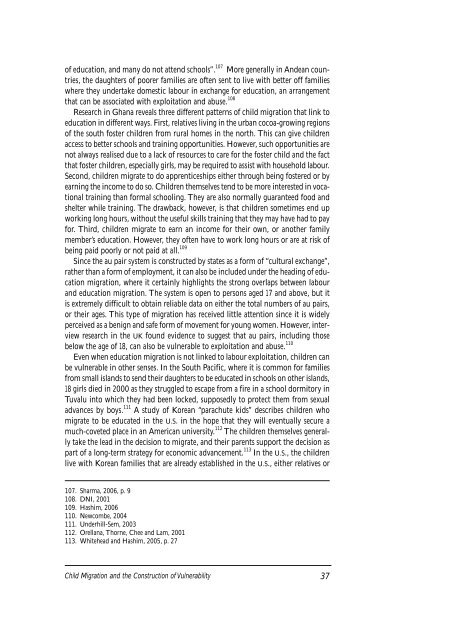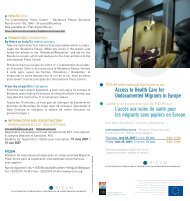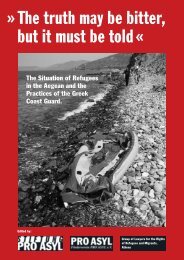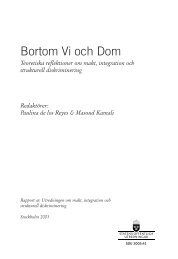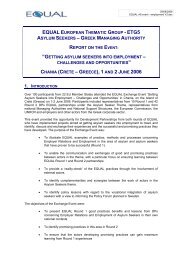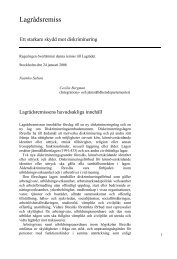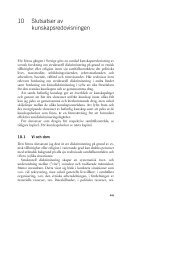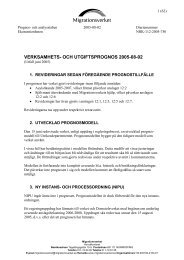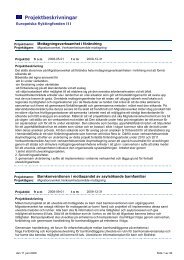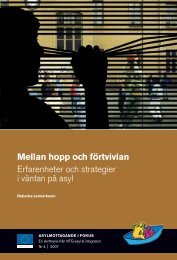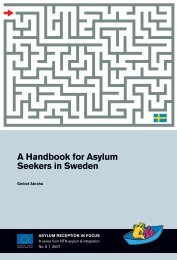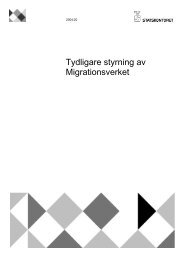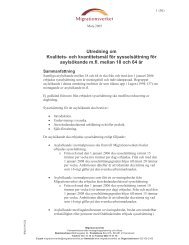and the Construction of Vulnerability - Child Trafficking
and the Construction of Vulnerability - Child Trafficking
and the Construction of Vulnerability - Child Trafficking
Create successful ePaper yourself
Turn your PDF publications into a flip-book with our unique Google optimized e-Paper software.
<strong>of</strong> education, <strong>and</strong> many do not attend schools”. 107 More generally in Andean countries,<br />
<strong>the</strong> daughters <strong>of</strong> poorer families are <strong>of</strong>ten sent to live with better <strong>of</strong>f families<br />
where <strong>the</strong>y undertake domestic labour in exchange for education, an arrangement<br />
that can be associated with exploitation <strong>and</strong> abuse. 108<br />
Research in Ghana reveals three different patterns <strong>of</strong> child migration that link to<br />
education in different ways. First, relatives living in <strong>the</strong> urban cocoa-growing regions<br />
<strong>of</strong> <strong>the</strong> south foster children from rural homes in <strong>the</strong> north. This can give children<br />
access to better schools <strong>and</strong> training opportunities. However, such opportunities are<br />
not always realised due to a lack <strong>of</strong> resources to care for <strong>the</strong> foster child <strong>and</strong> <strong>the</strong> fact<br />
that foster children, especially girls, may be required to assist with household labour.<br />
Second, children migrate to do apprenticeships ei<strong>the</strong>r through being fostered or by<br />
earning <strong>the</strong> income to do so. <strong>Child</strong>ren <strong>the</strong>mselves tend to be more interested in vocational<br />
training than formal schooling. They are also normally guaranteed food <strong>and</strong><br />
shelter while training. The drawback, however, is that children sometimes end up<br />
working long hours, without <strong>the</strong> useful skills training that <strong>the</strong>y may have had to pay<br />
for. Third, children migrate to earn an income for <strong>the</strong>ir own, or ano<strong>the</strong>r family<br />
member’s education. However, <strong>the</strong>y <strong>of</strong>ten have to work long hours or are at risk <strong>of</strong><br />
being paid poorly or not paid at all. 109<br />
Since <strong>the</strong> au pair system is constructed by states as a form <strong>of</strong> “cultural exchange”,<br />
ra<strong>the</strong>r than a form <strong>of</strong> employment, it can also be included under <strong>the</strong> heading <strong>of</strong> education<br />
migration, where it certainly highlights <strong>the</strong> strong overlaps between labour<br />
<strong>and</strong> education migration. The system is open to persons aged 17 <strong>and</strong> above, but it<br />
is extremely difficult to obtain reliable data on ei<strong>the</strong>r <strong>the</strong> total numbers <strong>of</strong> au pairs,<br />
or <strong>the</strong>ir ages. This type <strong>of</strong> migration has received little attention since it is widely<br />
perceived as a benign <strong>and</strong> safe form <strong>of</strong> movement for young women. However, interview<br />
research in <strong>the</strong> UK found evidence to suggest that au pairs, including those<br />
below <strong>the</strong> age <strong>of</strong> 18, can also be vulnerable to exploitation <strong>and</strong> abuse. 110<br />
Even when education migration is not linked to labour exploitation, children can<br />
be vulnerable in o<strong>the</strong>r senses. In <strong>the</strong> South Pacific, where it is common for families<br />
from small isl<strong>and</strong>s to send <strong>the</strong>ir daughters to be educated in schools on o<strong>the</strong>r isl<strong>and</strong>s,<br />
18 girls died in 2000 as <strong>the</strong>y struggled to escape from a fire in a school dormitory in<br />
Tuvalu into which <strong>the</strong>y had been locked, supposedly to protect <strong>the</strong>m from sexual<br />
advances by boys. 111 A study <strong>of</strong> Korean “parachute kids” describes children who<br />
migrate to be educated in <strong>the</strong> U.S. in <strong>the</strong> hope that <strong>the</strong>y will eventually secure a<br />
much-coveted place in an American university. 112 The children <strong>the</strong>mselves generally<br />
take <strong>the</strong> lead in <strong>the</strong> decision to migrate, <strong>and</strong> <strong>the</strong>ir parents support <strong>the</strong> decision as<br />
part <strong>of</strong> a long-term strategy for economic advancement. 113 In <strong>the</strong> U.S., <strong>the</strong> children<br />
live with Korean families that are already established in <strong>the</strong> U.S., ei<strong>the</strong>r relatives or<br />
107. Sharma, 2006, p. 9<br />
108. DNI, 2001<br />
109. Hashim, 2006<br />
110. Newcombe, 2004<br />
111. Underhill-Sem, 2003<br />
112. Orellana, Thorne, Chee <strong>and</strong> Lam, 2001<br />
113. Whitehead <strong>and</strong> Hashim, 2005, p. 27<br />
<strong>Child</strong> Migration <strong>and</strong> <strong>the</strong> <strong>Construction</strong> <strong>of</strong> <strong>Vulnerability</strong><br />
37


